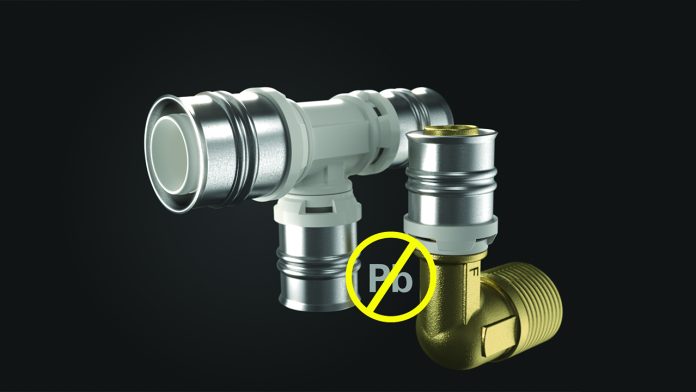INSIGHT
CREATING A LEAD-FREE FUTURE IN PLUMBING INSTALLATIONS
09:00,
22 September, 2023
Michael Hümpfner, Head of FRÄNKISCHE’s Building Technology Division, details the continuing journey towards lead-free materials for plumbing installations.
The plumbing industry is moving decisively towards lead-free materials for installations. These materials not only offer hygiene assurance and safety, but also align with European regulations, both now and in the years ahead.
FRÄNKISCHE has been at the front of this transition, having employed lead-free brass for its alpex F50 PROFI MLCP installation systems for nearly a decade. These systems also incorporate lead-free high performance plastic PPSU (polyphenylsulfone), introduced back in 2001.
Lead-free drinking water
The topic of lead-free drinking water installations, adhering to Europe-wide regulations designed to safeguard public health and the environment, has been a significant concern for the plumbing sector over the years.
Despite previous efforts to raise awareness and successful shifts in material usage by many manufacturers, there’s still a noticeable need for information. This is particularly pertinent as limit values are being tightened, with the potential future ban on brass materials containing lead. This evolving landscape necessitates planners and installers to stay updated to remain compliant both legally and technically.
Addressing the dangers
Lead in drinking water poses serious risks to human health and the environment. Potential sources include lead pipes and copper alloys containing lead, often found in pipe connections and fittings.
In order to enhance environmental and health protection, the EU Drinking Water Directive and the German Drinking Water Ordinance (TrinkwV) of 2001 adopted the World Health Organization’s (WHO) guideline value, which had been established since 1993.
Following a transition period that concluded in December 2013, the lead limit was significantly reduced from 25 to 10 micrograms per litre of water. Consequently, the quality demands for drinking water have become more stringent, encompassing both microbiological requirements and metal limit values at every point of use.
Hygienic safety
This drive led to the complete replacement of lead pipes. In contrast, pipes composed of materials free from heavy metals, including certified plastics, continue to be deemed hygienically safe.
For parts containing lead-containing copper alloys, such as fittings, the German Environment Agency (UBA) has compiled a list of metallic materials suitable for ensuring drinking water hygiene. This list serves as a foundation for action for manufacturers, planners, and installers.
The well-defined material regulations set by the UBA provide manufacturers with certainty regarding their production processes. Since 2013, alongside the use of high performance plastic PPSU, FRÄNKISCHE has employed lead-free brass for its pipe connectors. These materials are designed to meet future requirements as well. By employing certified, safe materials and adhering to accepted technical practices, installers can confidently ensure drinking water hygiene compliance.
Stricter regulations
In January 2021, the EU further amended the European Drinking Water Directive, halving the permissible lead content from 10 to 5 micrograms per litre. EU member states were granted until early 2023 to implement these regulations in their national laws, a move likely to be followed by the UK.
Moving forward, those utilising metallic materials in contact with drinking water will need to adhere to European regulations, including the Positive list of metallic materials. Only such materials will be authorised for the construction and maintenance of drinking water installations. While the new European system is pending, the guidelines and evaluation criteria of the German Environment Agency will continue to hold sway.
Implications for copper alloys
Certain copper alloys, with lead content exceeding future evaluation criteria outlined by the German Environment Agency, are poised to fall short of the new parameter value of the Drinking Water Directive and the Drinking Water Ordinance, which are still subject to adjustment.
Lower lead limit values will likely restrict or even prohibit the use of some currently permitted copper alloys. The future use of the copper-tin-lead alloy (CC499K), for instance, in new drinking water installations is becoming increasingly uncertain.
Further regulations concerning lead content in materials for drinking water installations must be considered, such as the EU-wide chemicals regulation REACH Regulation (EC) No. 1907/2006. Each of these regulations remains in effect without prejudice to the others, possibly leading to the prohibition of certain materials in the foreseeable future.
Embracing change
Within just a few years, the framework for drinking water installations has undergone significant changes to enhance health and environmental protection. Manufacturers of installation systems must grapple with the challenge of ensuring lead-free designs for their products and systems.
www.hvpmag.co.uk
https://www.hvpmag.co.uk/Creating-a-lead-free-future-in-plumbing-installations/16972













